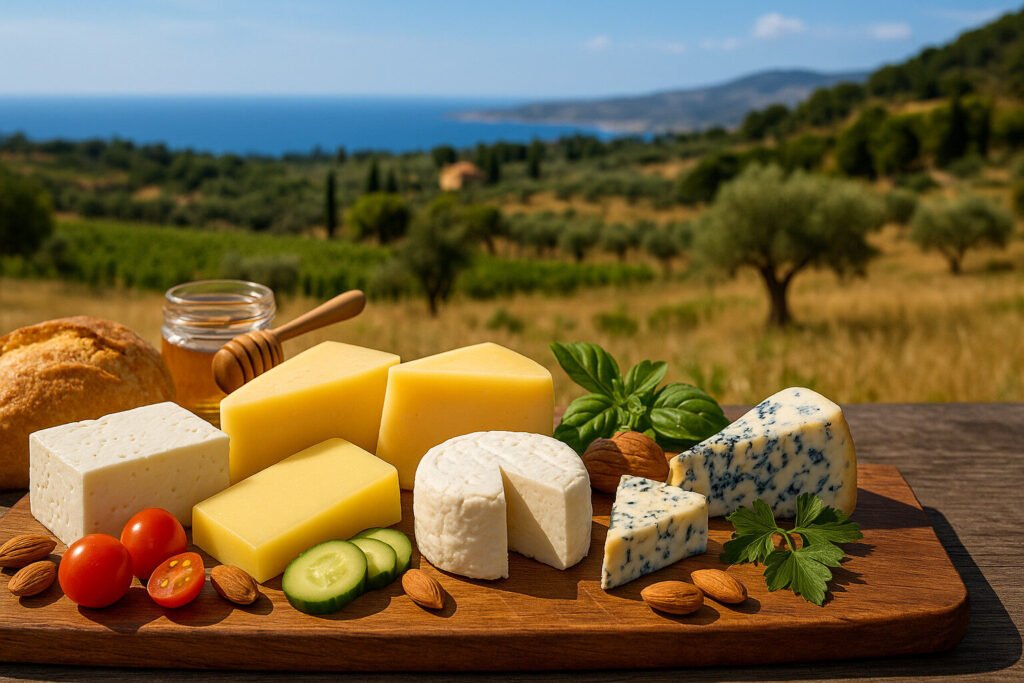Cheese Of Mediterranean Europe
Definition and Scope
Mediterranean European cheeses originate from countries bordering the Mediterranean Sea, including Italy, France, Spain, and Greece. These cheeses reflect the region’s climate, pasture, and traditional animal husbandry practices. They encompass diverse milk types, textures, and aging periods, forming a distinct category in cheese taxonomy.
This category includes fresh, soft-ripened, semi-hard, and hard cheeses, often made from sheep’s or goat’s milk. Many Mediterranean cheeses carry protected designation of origin status, linking them to specific terroirs. Their production methods have been refined over centuries, preserving artisanal techniques alongside modern innovations.
Production Methods
Traditional Mediterranean cheesemaking frequently uses raw milk and natural rennet from artichokes or thistles. Many varieties undergo brining or oil-curing to develop characteristic rinds and extend shelf life. Production scales range from small farmstead operations to larger regulated facilities maintaining protected methods.
Key techniques include pasta filata for stretched-curd cheeses like Mozzarella and Provolone. Others like Feta and Manchego utilize pressing and brining for their crumbly textures. Aging periods vary from days for fresh cheeses to years for hard grating varieties, influencing final moisture content and flavor intensity.
Sensory Profile
Mediterranean cheeses typically exhibit bright acidity and pronounced saltiness from brining or sea salt application. Many develop earthy, herbal notes from grazing on wild Mediterranean flora. Texture ranges from the moist creaminess of fresh cheeses to crystalline granularity in aged varieties.
Distinct flavor profiles include the sheep’s milk sweetness of Pecorino Romano and the peppery tang of Roquefort. Rinds contribute additional complexity through mold development or oil infusion. These sensory characteristics make Mediterranean cheeses highly distinguishable from other regional styles in blind tastings.
Culinary Applications
Mediterranean cheeses serve both table and cooking purposes across regional cuisines. Fresh varieties like Burrata and Feta feature prominently in salads and cold dishes. Aged grating cheeses such as Parmigiano-Reggiano provide umami depth to pasta, soups, and risottos.
Many Mediterranean cheeses have specific culinary pairings, like Manchego with quince paste or Halloumi for grilling. Their melting properties vary from the stretch of Mozzarella to the non-melting characteristic of fried cheeses. These functional differences determine their optimal use in traditional and contemporary recipes.
Regional Examples
Italy contributes numerous protected cheeses including Pecorino Toscano, Gorgonzola, and Asiago. French Mediterranean examples feature Roquefort, Banon, and Picodon. Each region maintains strict production protocols governing milk source, aging environment, and geographical boundaries.
Spain produces Manchego from La Mancha’s sheep milk and Mahón from Menorca. Greece’s Feta and Kefalotyri represent distinct brine-cured and hard cheese traditions. These regional specialties demonstrate how local microclimates and cultural practices create unique cheese identities within the Mediterranean classification.

